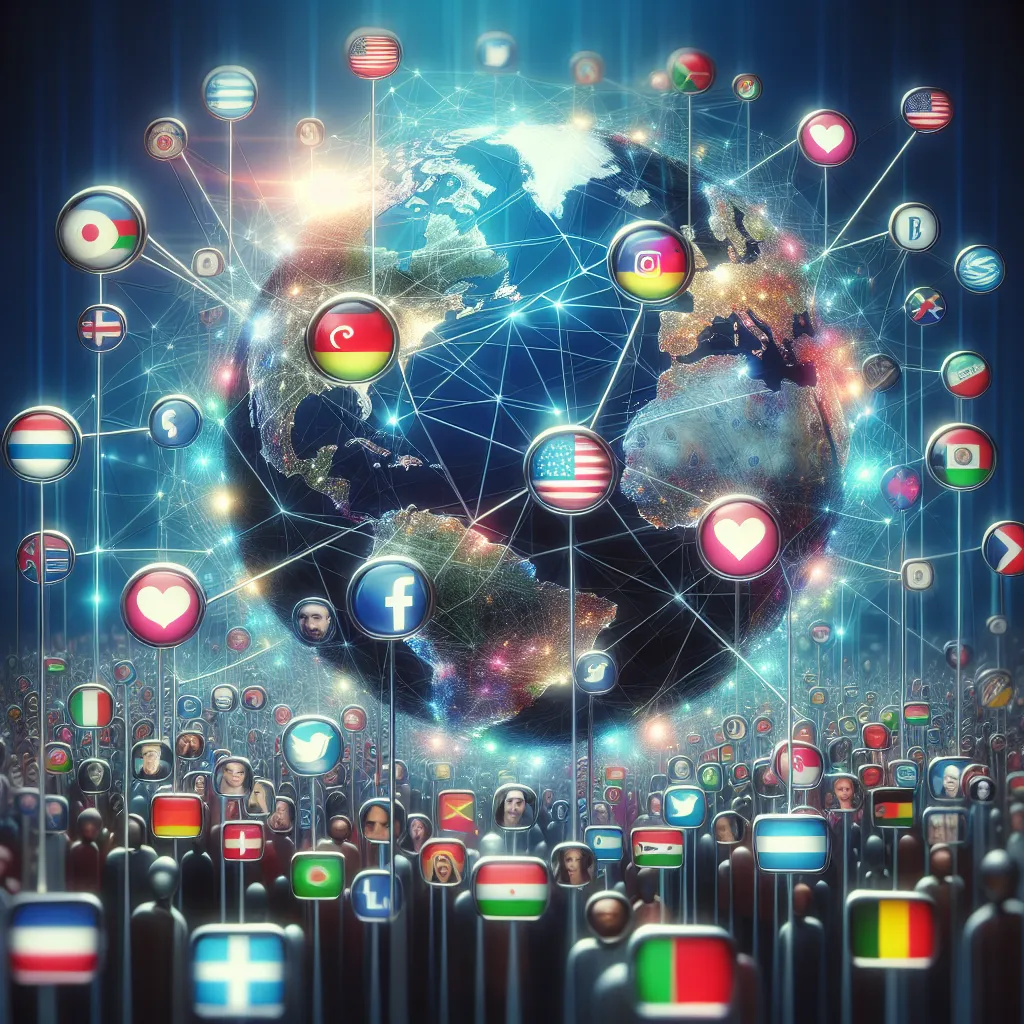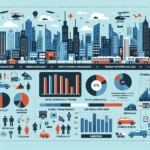The IELTS Reading section is a crucial component of the test, assessing your ability to comprehend complex texts and identify key information. Today, we’ll focus on a topic that has gained significant traction in recent years: “Social media’s role in public diplomacy.” This subject has become increasingly relevant in the digital age, making it a potential candidate for future IELTS examinations.
Based on trends and frequency of appearance in past IELTS tests, topics related to social media and international relations have been consistently popular. The intersection of these two areas – social media’s impact on public diplomacy – is a timely and evolving subject that aligns well with the IELTS exam’s focus on contemporary issues. Let’s explore this topic through a practice reading exercise designed to mirror the actual IELTS test format.
 Social media's impact on public diplomacy
Social media's impact on public diplomacy
Reading Passage
Social Media: A New Frontier in Public Diplomacy
In the era of digital communication, social media platforms have emerged as powerful tools reshaping the landscape of public diplomacy. Traditional diplomatic channels are being supplemented, and in some cases supplanted, by tweets, posts, and shares that can reach millions instantly. This shift has profound implications for how nations engage with foreign publics and manage their international image.
Public diplomacy, once the domain of formal state-to-state interactions and carefully crafted media campaigns, has been democratized by social media. Government officials, from ambassadors to heads of state, now have direct lines of communication with global audiences. This immediacy allows for real-time engagement on pressing issues, fostering a sense of transparency and accessibility that was previously unattainable.
However, the rise of social media in diplomacy is not without its challenges. The rapid spread of information can be a double-edged sword. While it enables quick dissemination of official statements and policy positions, it also amplifies the potential for misinformation and diplomatic faux pas. A single ill-considered tweet can spark international incidents, highlighting the need for careful management of these digital platforms.
Moreover, social media has empowered non-state actors to play significant roles in shaping international narratives. Activists, journalists, and ordinary citizens can now broadcast their perspectives to a global audience, sometimes challenging official government stances. This democratization of information flow has forced diplomats to adapt, engaging not just with their counterparts but with a diverse array of influencers and opinion-makers online.
The strategic use of social media in public diplomacy extends beyond mere communication. It has become a tool for nation branding, cultural exchange, and even crisis management. During natural disasters or political upheavals, social media channels often serve as critical conduits for information and aid coordination. Governments leverage these platforms to showcase their humanitarian efforts and build goodwill among foreign publics.
Despite its potential, the effectiveness of social media in public diplomacy remains a subject of debate. Critics argue that the depth of engagement on these platforms is often superficial, favoring quick soundbites over nuanced policy discussions. There are also concerns about the echo chamber effect, where users are primarily exposed to views that align with their existing beliefs, potentially limiting the reach of diplomatic messages to those already sympathetic to a particular stance.
As nations navigate this new digital terrain, the integration of social media into public diplomacy strategies has become inevitable. Successful approaches often involve a carefully balanced mix of traditional diplomatic methods and innovative digital engagement. Training programs for diplomats now frequently include components on effective social media use, recognizing its crucial role in modern statecraft.
Looking ahead, the role of social media in public diplomacy is likely to evolve further with technological advancements. Virtual reality diplomacy, AI-driven engagement, and blockchain for verifying diplomatic communications are all on the horizon. These developments promise to open new avenues for international dialogue and cooperation, while also presenting fresh challenges for diplomats and policymakers.
In conclusion, social media has undeniably transformed the practice of public diplomacy. It has created unprecedented opportunities for direct engagement between nations and foreign publics, while also introducing new complexities and risks. As this digital revolution continues to unfold, the ability to effectively harness social media will increasingly become a key determinant of a nation’s diplomatic success on the global stage.
Questions
True/False/Not Given
For questions 1-5, decide if the statements are True, False, or Not Given based on the information in the passage.
- Social media has completely replaced traditional diplomatic channels in public diplomacy.
- Government officials now have more direct communication with global audiences through social media.
- The use of social media in diplomacy has eliminated the spread of misinformation.
- Non-state actors have gained more influence in shaping international narratives due to social media.
- All governments have successfully integrated social media into their public diplomacy strategies.
Multiple Choice
Choose the correct letter, A, B, C, or D for questions 6-8.
-
According to the passage, social media in public diplomacy:
A) Only has positive effects
B) Has both advantages and challenges
C) Is ineffective compared to traditional methods
D) Is used exclusively by government officials -
The passage suggests that social media’s role in public diplomacy:
A) Is diminishing over time
B) Remains controversial in its effectiveness
C) Has been universally accepted as the best approach
D) Only affects developed countries -
Future developments in social media diplomacy may include:
A) Abandoning digital platforms entirely
B) Focusing solely on traditional diplomatic methods
C) Incorporating technologies like virtual reality and AI
D) Restricting access to diplomatic communications
Matching Headings
Match the following headings (A-F) to the paragraphs (9-11). You may use any heading more than once.
A) Challenges of Social Media in Diplomacy
B) The Future of Digital Diplomacy
C) Traditional vs. Modern Diplomatic Methods
D) Social Media’s Impact on Non-State Actors
E) Crisis Management Through Social Media
F) Debate on Social Media’s Diplomatic Effectiveness
- Paragraph 4
- Paragraph 5
- Paragraph 6
Answer Key
- False – The passage states that traditional diplomatic channels are being “supplemented, and in some cases supplanted,” not completely replaced.
- True – The passage mentions that government officials “now have direct lines of communication with global audiences.”
- False – The passage indicates that social media can amplify “the potential for misinformation.”
- True – The passage states that social media has “empowered non-state actors to play significant roles in shaping international narratives.”
- Not Given – The passage does not provide information on whether all governments have successfully integrated social media into their strategies.
- B – The passage discusses both the advantages and challenges of using social media in public diplomacy.
- B – The passage mentions that “the effectiveness of social media in public diplomacy remains a subject of debate.”
- C – The final paragraph mentions “Virtual reality diplomacy, AI-driven engagement, and blockchain” as future developments.
- D – This paragraph discusses how social media has empowered non-state actors in shaping international narratives.
- E – This paragraph mentions how social media is used in crisis management and humanitarian efforts.
- F – This paragraph discusses the debate on the effectiveness of social media in public diplomacy.
Common Mistakes
When tackling reading passages like this, students often make the following mistakes:
- Overlooking key qualifiers: Words like “some,” “often,” or “can” are crucial in determining the accuracy of statements.
- Making assumptions: Avoid inferring information not explicitly stated in the passage.
- Misinterpreting True/False/Not Given questions: Remember, “Not Given” means the information is neither confirmed nor denied in the text.
- Rushing through the passage: Take time to understand the main ideas and supporting details.
Vocabulary
Here are some key vocabulary items from the passage:
- Diplomacy (noun) /dɪˈpləʊməsi/ – The profession, activity, or skill of managing international relations
- Supplant (verb) /səˈplɑːnt/ – To replace or supersede, especially by force or treachery
- Faux pas (noun) /ˌfəʊ ˈpɑː/ – An embarrassing or tactless act or remark in a social situation
- Democratization (noun) /dɪˌmɒkrətaɪˈzeɪʃən/ – The process of making something accessible to everyone
- Nuanced (adjective) /ˈnjuːɑːnst/ – Characterized by subtle shades of meaning or expression
Grammar Focus
Pay attention to the use of present perfect tense in the passage, which is used to describe actions that started in the past and continue to the present:
- “Social media platforms have emerged as powerful tools…”
- “This shift has profound implications…”
This tense is often used in academic writing to discuss ongoing trends or recent developments.
Tips for IELTS Reading Success
- Practice active reading: Engage with the text by predicting content, asking questions, and summarizing main points.
- Improve your vocabulary: Regularly learn new words and phrases related to common IELTS topics.
- Time management: Allocate your time wisely between reading the passage and answering questions.
- Skim and scan effectively: Use these techniques to quickly locate specific information in the text.
- Read the instructions carefully: Ensure you understand what each question is asking before answering.
- Don’t panic if you encounter unfamiliar words: Try to understand the overall context and main ideas.
Remember, consistent practice with various types of texts and question formats is key to improving your IELTS Reading score. Stay informed about current affairs, particularly in areas like technology, social issues, and international relations, as these topics frequently appear in IELTS tests.
For more practice on IELTS Reading strategies, visit our website for additional resources and tips to enhance your performance in the IELTS exam.


